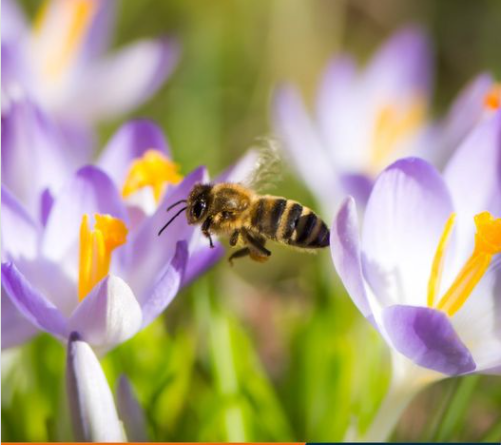Pollinators like bees and butterflies are vital to our way of life, but some of their species are declining. According to the Nebraska Natural Legacy Project, there are at least 17 insect pollinator species including butterflies, moths and bumble bees in need of conservation in Nebraska. These pollinators are at risk in our state under current conditions or because of emerging threats to their populations.
As part of our sustainability efforts, LES is exploring ways to benefit pollinators and working with partners to make a positive impact on their populations in the community.
Along with being part of the Electric Power Research Institute’s, or EPRI, Power-in-Pollinators Initiative, this year LES staff also took part in a pollinator planting project on the 13th Street Pollinator Flyway in downtown Lincoln to celebrate Nebraska Pollinators Week.
Across the rest of the country, numerous pollinator species are in danger. LES is excited to help raise awareness about pollinators and their conservation to stem the decline of pollinator populations due to habitat loss, pesticide exposure, disease and climate change.
What’s the big deal?
Birds, bats, bees, butterflies, beetles and other small mammals that pollinate plants are responsible for bringing us one out of every three bites of food. They also sustain our ecosystems and produce our natural resources by supporting somewhere between 75% and 95% of all flowering plants on the earth.
By planting pollinator-friendly plants, such as natural grasses, flowers, shrubs and trees, we can restore natural habitat and bring back much needed pollinators.
Planting for pollinators
When designing the landscape for the LES Operations Center (LOC), staff wanted to integrate the new facility into its natural surroundings. The surrounding areas included existing farmlands, wetlands and natural grass areas. To better serve this vision, the amount of manicured grass was limited and a variety of pollinator-friendly plants were incorporated around the facility’s preserved wetlands and around storm detention ponds. In taking these simple considerations to heart, LES is helping to support birds, bees, butterflies and other pollinator species in our community that are critical to the health of the ecosystem.
Here is a list of some of the pollinator-friendly plants at the LOC campus.
- Butterfly Milkweed.
- New England Aster.
- Blue Flag Iris.
- Thickspike Gayfeather.
- Spiked Gayfeather.
- Cardinal Flower.
- Great Blue Lobelia.
- Big Bluestem.
- Lance Leaf Coreopsis.
- Dwarf Blanketflower Goblin.
- Annual Sunflower.
- Plains Sunflower.
- Rough Blazing Star.
- Wild Bergamot.
- Smooth Penstemon.
- Mexican Red Hat.
- Grayhead Coneflower.
- Little Bluestem.
Our goal is to continue exploring ways to promote the health of pollinators through conservation, education and research.


Recent Comments